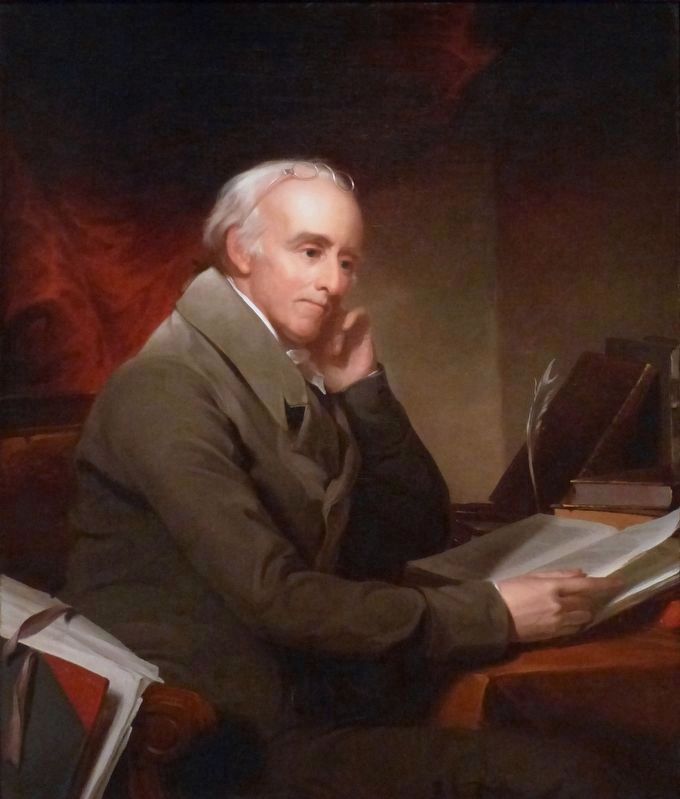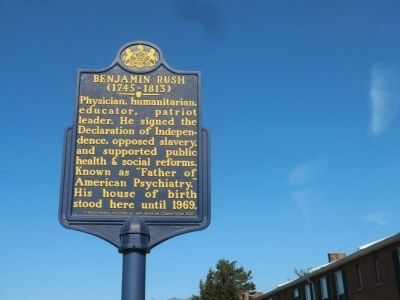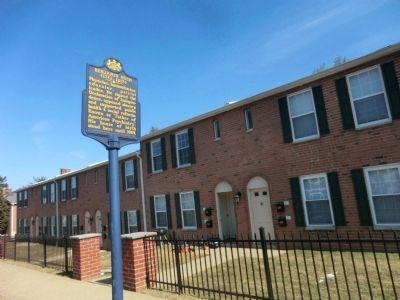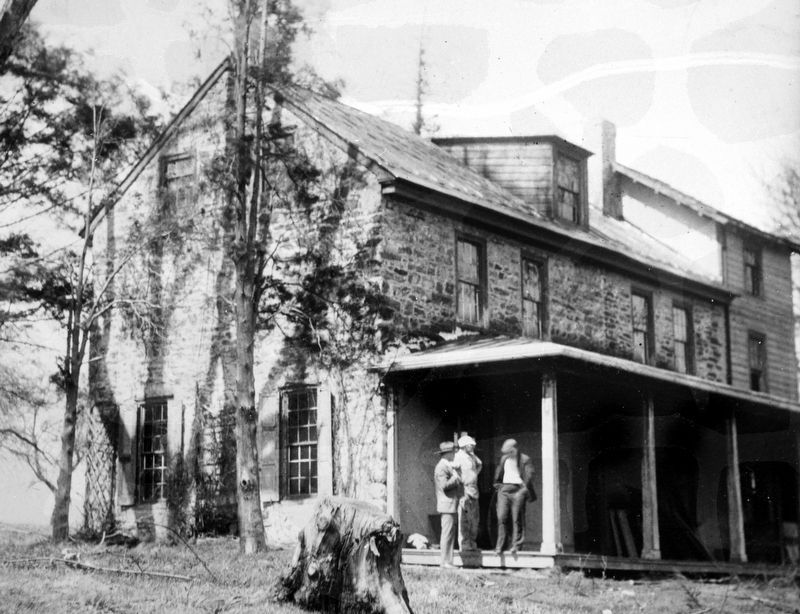Morrell Park in Philadelphia in Philadelphia County, Pennsylvania — The American Northeast (Mid-Atlantic)
Benjamin Rush
(1745-1813)
Erected 2002 by Pennsylvania Historical & Museum Commission.
Topics and series. This historical marker is listed in these topic lists: Education • Government & Politics • Science & Medicine • War, US Revolutionary. In addition, it is included in the Pennsylvania Historical and Museum Commission, and the Signers of the Declaration of Independence series lists. A significant historical year for this entry is 1969.
Location. 40° 4.643′ N, 74° 59.138′ W. Marker is in Philadelphia, Pennsylvania, in Philadelphia County. It is in Morrell Park. Marker is at the intersection of East Keswick Road and Rayland Road on East Keswick Road. Touch for map. Marker is at or near this postal address: 214 E Keswick Rd, Philadelphia PA 19154, United States of America. Touch for directions.
Other nearby markers. At least 8 other markers are within 3 miles of this marker, measured as the crow flies. Andalusia (approx. 1˝ miles away); Katharine Drexel (approx. 1˝ miles away); Poquessing Creek (approx. 1.7 miles away); Byberry Hall (approx. 1.7 miles away); Glen Foerd on the Delaware (approx. 1.9 miles away); Busleton Field (approx. 2.2 miles away); Torresdale (approx. 2.3 miles away); Thomas Holme (1624-1695) (approx. 2.4 miles away). Touch for a list and map of all markers in Philadelphia.

Photographed By Thomas Sully, circa 1812
4. Benjamin Rush
This 1812-13 portrait of Benjamin Rush by Thomas Sully hangs in the National Portrait Gallery in Washington, DC.
“Benjamin Rush was a prominent physician, a social reformer, and a signer of the Declaration of Independence. After studying medicine abroad at the University of Edinburgh, he returned to Philadelphia to work. He advocated bloodletting and purges for many diseases but also moved the profession toward more manageable diagnoses and treatment regimens. Rush's accomplishments were many. He was a pioneer in the study of mental illness; he organized the Pennsylvania antislavery society; he agitated for prison reform and the education of women; and he wrote the first American chemistry text.
Thomas Sully depicted Rush as a thoughtful man of letters. One of Rush's colleagues, who commissioned a version of this portrait, described how Sully ‘appreciate[d] the mind which animates the face of my friend ... I have no doubt that you will be enabled to furnish me with a portrait which will be gratifying to me.’” – National Portrait Gallery
“Benjamin Rush was a prominent physician, a social reformer, and a signer of the Declaration of Independence. After studying medicine abroad at the University of Edinburgh, he returned to Philadelphia to work. He advocated bloodletting and purges for many diseases but also moved the profession toward more manageable diagnoses and treatment regimens. Rush's accomplishments were many. He was a pioneer in the study of mental illness; he organized the Pennsylvania antislavery society; he agitated for prison reform and the education of women; and he wrote the first American chemistry text.
Thomas Sully depicted Rush as a thoughtful man of letters. One of Rush's colleagues, who commissioned a version of this portrait, described how Sully ‘appreciate[d] the mind which animates the face of my friend ... I have no doubt that you will be enabled to furnish me with a portrait which will be gratifying to me.’” – National Portrait Gallery
Credits. This page was last revised on February 2, 2023. It was originally submitted on March 28, 2015, by Don Morfe of Baltimore, Maryland. This page has been viewed 1,001 times since then and 71 times this year. Photos: 1, 2. submitted on March 28, 2015, by Don Morfe of Baltimore, Maryland. 3, 4. submitted on July 22, 2018, by Allen C. Browne of Silver Spring, Maryland. • Bill Pfingsten was the editor who published this page.


